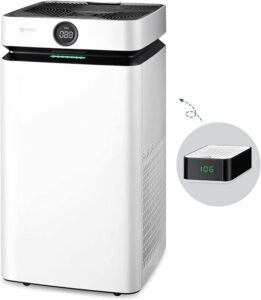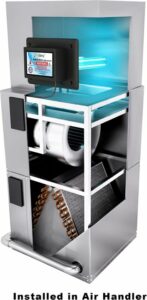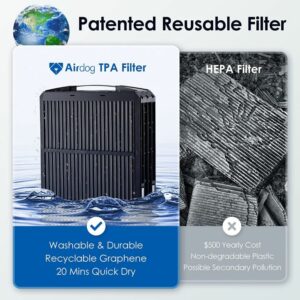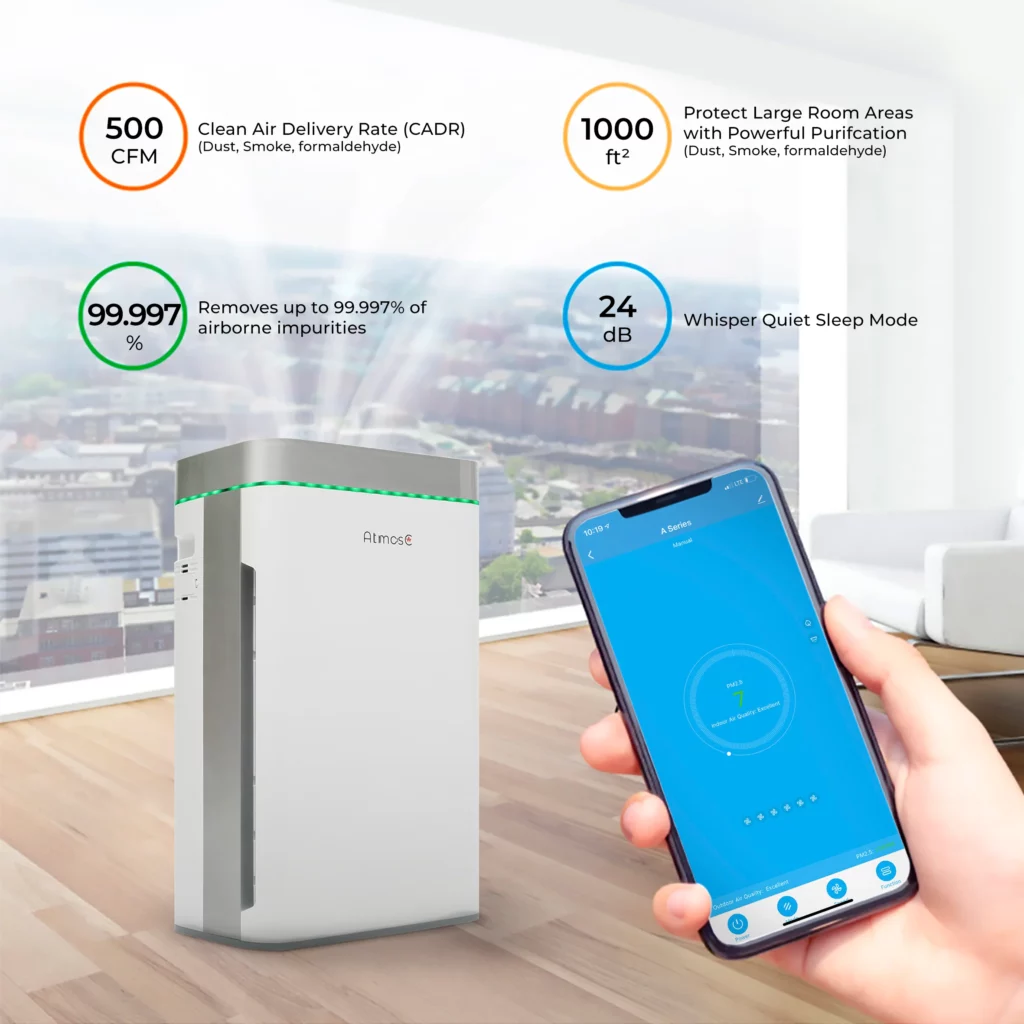Breathe Easy: Understanding the Effectiveness of UV Air Purifiers
Introduction
Indoor air quality is a crucial aspect of our overall health and well-being.
With pollutants such as allergens, bacteria, viruses, and mold spores lurking in our air, it is essential to find practical solutions to maintain clean and healthy indoor environments.
This is where UV air purifiers come into play.
In this article, we will delve into the realm of UV air purifiers, examining their effectiveness in improving indoor air quality.
Provo Green Products is your reliable source for discovering sustainable products that positively impact your life and the environment.
With extensive experience in manufacturing, trades, and construction, Provo Green Products thoroughly researches each product before providing accurate and up-to-date information on its sustainability.
You can trust that you’re getting trustworthy insights to make informed choices whether you’re looking for solar products, electric bikes, eco-friendly products, renewable energy solutions, etc.
Provo Green Products is your go-to destination for finding the right green products for your lifestyle.
Disclosure: We may earn a small commission if you click on one of our links.
This does not affect the pricing of the product whatsoever.
What are UV air purifiers?
UV air purifiers utilize ultraviolet (UV) technology to eliminate airborne pollutants.
Unlike traditional air purifiers that use filters to trap particles, UV air purifiers use UV lamps or bulbs to produce short-wave ultraviolet light.
This light has germicidal properties that can disrupt the DNA structure of microorganisms, rendering them inactive and unable to reproduce.
Understanding the benefits of UV air purifiers
One of the significant advantages of UV air purifiers is their ability to target and eliminate bacteria, viruses, and mold spores.
These microscopic organisms are often responsible for respiratory illnesses and allergies.
By neutralizing them, UV air purifiers can help reduce the spread of infections and alleviate symptoms in individuals with sensitivities.
UV air purifiers have also shown promise in reducing allergens and asthma triggers.
They can effectively neutralize common allergens such as dust mites and pet dander, relieving those with allergies or asthma.
However, it’s important to note that UV air purifiers may be less effective against larger particles like pollen, which may require additional filtration methods.

Examining the limitations of UV air purifiers
While UV air purifiers offer several benefits, they do have limitations.
Their effectiveness varies depending on the type of pollutants present in the air.
UV light is most effective against microorganisms but may be less efficient in removing larger particles like dust and pollen.
Consider additional technologies such as HEPA or activated carbon filters for comprehensive air purification.
Another limitation is the coverage area of UV air purifiers.
Due to the nature of UV light, its effectiveness diminishes with distance.
This means more than one UV air purifier may be required to purify the air in larger spaces.
It is crucial to consider the room size or area where the purifier will be used and ensure proper placement to maximize its effectiveness.
UV air purifiers vs. other types of air purifiers
To understand the effectiveness of UV air purifiers, it is essential to compare them with other air purifiers commonly available in the market.
HEPA filters, for instance, are highly efficient in trapping particles as small as 0.3 microns, including dust, pollen, and pet dander.
Activated carbon filters excel in removing odors and volatile organic compounds (VOCs).
On the other hand, Ionizers release ions that attach to particles, causing them to clump together and fall out of the air.
UV air purifiers have their unique strengths.
They excel at neutralizing microorganisms, making them highly effective in reducing the spread of infections.
However, it is crucial to consider your indoor environment’s specific needs and requirements when choosing the most suitable air purifier.
Sometimes, a combination of technologies may be necessary to achieve optimal results.
Debunking common misconceptions about UV air purifiers
A few common misconceptions surrounding UV air purifiers need to be addressed.
One misconception is the concern about UV radiation exposure.
While UV light can be harmful to the skin and eyes in direct exposure, UV air purifiers are designed to contain and prevent the leakage of UV radiation.
They are safe for use in indoor environments when operated within manufacturer guidelines.
Following the manufacturer’s instructions is essential to ensure UV air purifiers’ safe and effective use.
Another misconception is related to ozone production.
Ozone is a gas that can harm human health in high concentrations.
Some UV air purifiers produce a small amount of ozone as a byproduct of the UV light reaction.
However, reputable manufacturers design their products to meet strict safety standards and ensure that ozone emissions remain within acceptable levels.
Selecting UV air purifiers that are certified and compliant with relevant safety regulations is crucial.

Effectiveness of UV air purifiers in different settings
UV air purifiers have shown effectiveness in various settings, including residential and commercial applications.
They can help maintain a healthier environment, especially for individuals with respiratory conditions or allergies.
In residential settings, UV air purifiers can be utilized in bedrooms, living rooms, kitchens, and other areas prone to airborne contaminants.
In commercial settings, UV air purifiers find applications in hospitals, schools, offices, and other public spaces.
These environments often harbor a high concentration of bacteria, viruses, and mold spores, making them ideal candidates for UV air purification.
Implementing UV air purifiers in such settings can reduce the spread of infections and promote better air quality for occupants.
Factors to consider before purchasing a UV air purifier
Before investing in a UV air purifier, several factors must be considered to ensure the best outcome.
Firstly, assessing the room size or area where the purifier will be used is essential.
Different models have varying coverage capacities, and selecting a purifier that matches the room size is crucial for optimal performance.
Maintenance is another important consideration.
UV lamps or bulbs in air purifiers may require periodic replacement to maintain effectiveness.
Understanding the maintenance requirements and associated costs is essential to ensure the purifier can be properly maintained over time.
Additionally, it is advisable to research and select UV air purifiers from reputable manufacturers.
Look for certifications and reviews from trusted sources to ensure that the product meets industry standards and has a track record of effectiveness and reliability.

Case studies and real-world examples
To gain further insight into the effectiveness of UV air purifiers, let’s explore a couple of case studies and real-world examples.
In a hospital setting, UV air purifiers installed in operating rooms have been shown to reduce airborne pathogens, contributing to a decrease in surgical site infections.
Similarly, schools that have implemented UV air purifiers in classrooms have reported improved attendance and decreased instances of illness among students and teachers.
Testimonials from users and experts also provide valuable insights.
Many individuals who have incorporated UV air purifiers into their homes or workplaces have reported noticeable improvements in indoor air quality and a reduction in respiratory symptoms.
Experts in the field of air purification also emphasize the benefits of UV technology in neutralizing microorganisms and highlight its potential to maintain cleaner and healthier indoor environments.
Conclusion
UV air purifiers offer a valuable solution for improving indoor air quality by effectively targeting and neutralizing microorganisms.
They have shown effectiveness in reducing the spread of infections, alleviating allergies and asthma symptoms, and promoting cleaner air in various settings.
While their effectiveness may be limited against larger particles and coverage areas, combining UV air purifiers with other air purification technologies can provide comprehensive results.
Breathe easy, knowing UV air purifiers can contribute to cleaner air and improved well-being.
By understanding the strengths and limitations of UV air purifiers and making informed decisions, individuals and organizations can take proactive steps toward creating healthier and more comfortable indoor environments.
It is vital to choose UV air purifiers from reputable manufacturers, adhere to safety guidelines, and consider specific factors such as room size and maintenance requirements.
Stay in Touch!
I’am a dedicated entrepreneur with many years of experience and an integrity-driven individual who is highly motivated to succeed. Leveraging extensive expertise in manufacturing, construction, and various trades, we can provide a solid foundation for sustainable living. Our meticulous research process guarantees that our information about each product is precise and current, allowing you to make informed decisions. A deep understanding of business operations empowers me to consistently implement improvements that result in ongoing success. Visit site.

